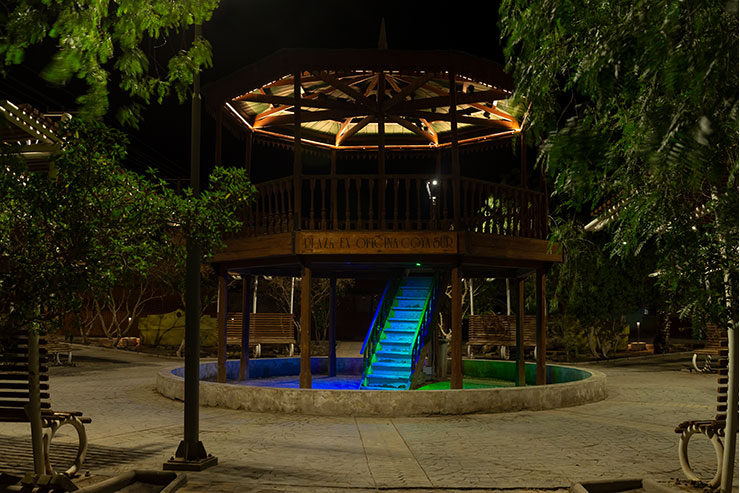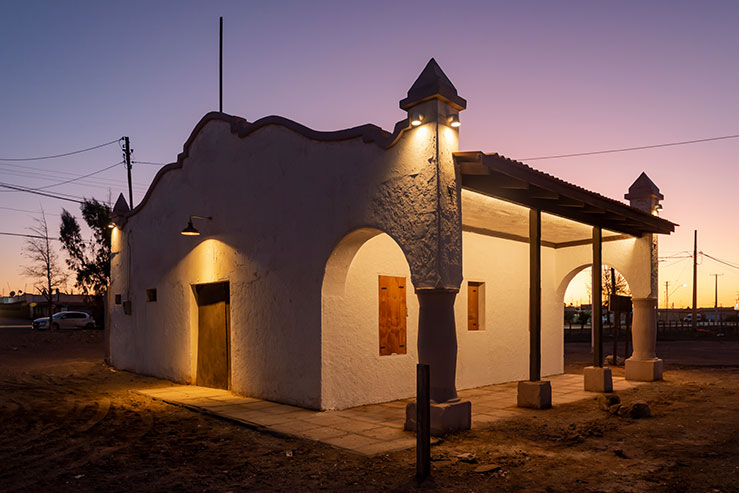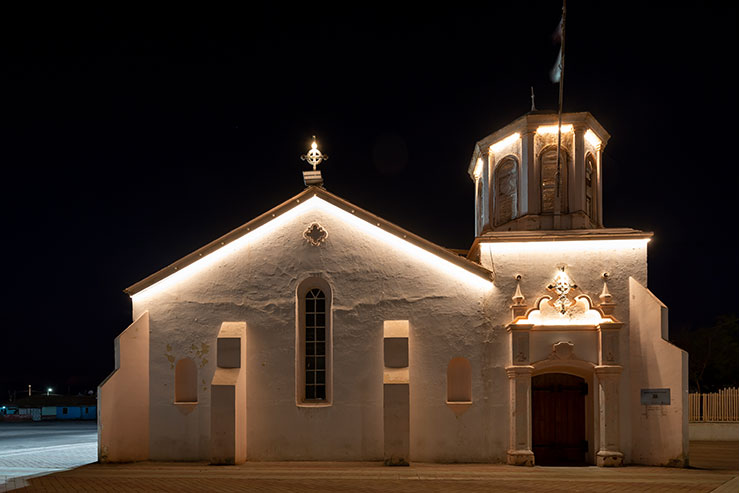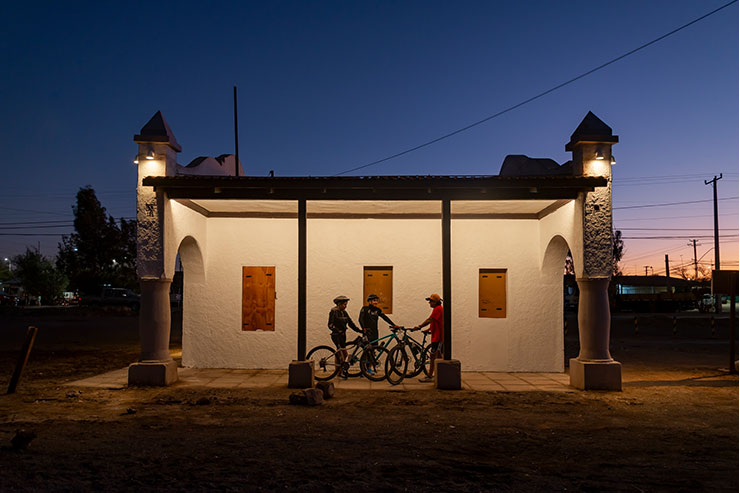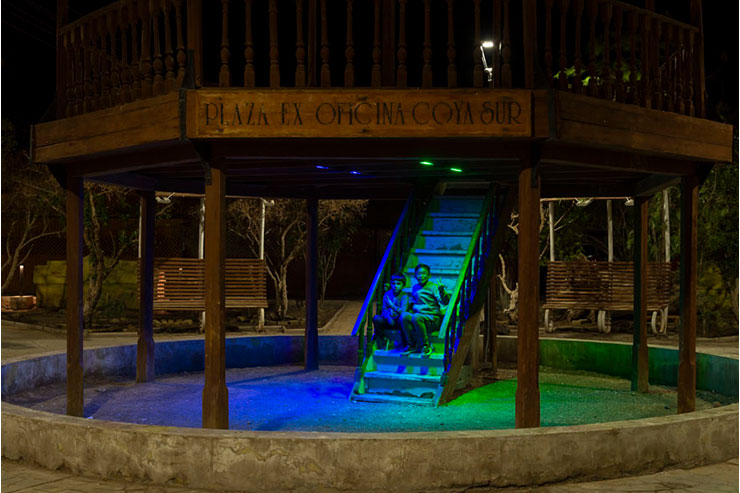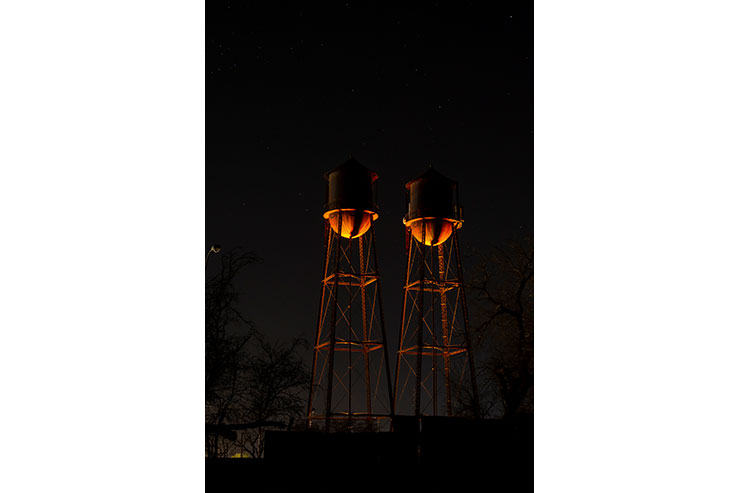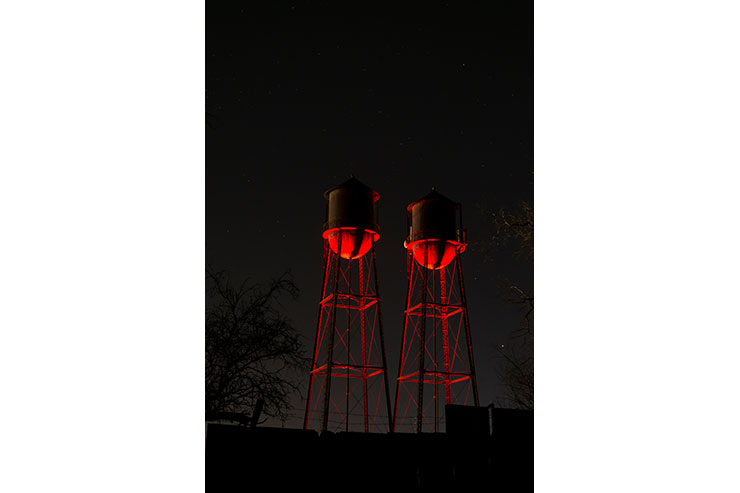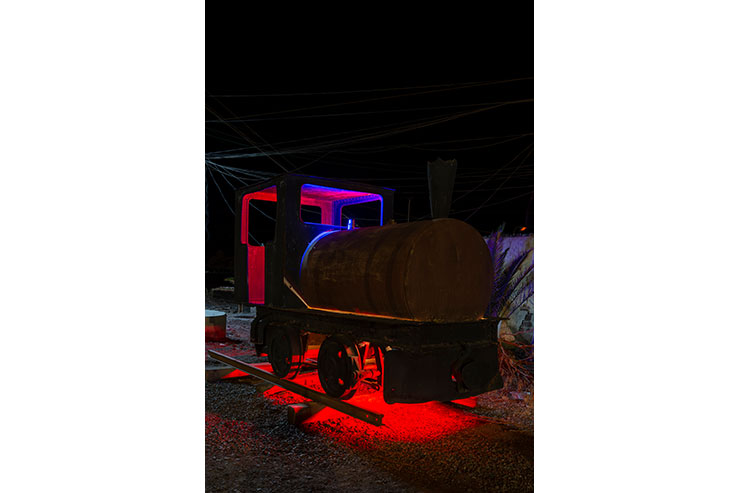- ABOUT
- JUDGING
- CONTACT
- MORE
- 2024 Entries
- Installations 2024
- Past Winners
- Subscribe
- [d]arc directory
- arc magazine
- darc magazine
María Elena, Chile
ProjectMaría ElenaLocationAtacama Desert, ChileLighting DesignDIAV Lighting + Ciluz, ChileClientENEL + Maria Elena MunicipalityLighting SuppliersLed Color, Color Kinetics, Ecosense, FactoryluxPhotographyMaría Cirano
“María Elena Saltpeter Office” is a town situated in the driest region of the Atacama Desert, inaugurated in 1926. It stands as an urbanistic paradigm of the Industrial Revolution, embodying the concept of an entirely planned ideal city, interwoven with a culture of survival amid the vast pampas.
Remarkably, all nitrate mining towns have fallen into abandonment since the Second World War, leaving María Elena as the sole survivor, maintaining its vibrancy. This distinction arises from its unique status as the only active nitrate mine globally, underscoring its historical and contemporary significance.
In an effort to create a comprehensive lighting plan and enrich the architectural legacy of historical structures, a proposal was put forth to illuminate six significant locations ichosen by the community as a first phase. These include the San Rafael de Arcángel Church, the Theater, the Water Towers, the Locomotive sculpture, Plaza Coya Sur, and the old Train Station. Through extensive citizen engagement and consultations with municipal authorities, the objectives and expectations for the lighting design were delineated, incorporating criteria for environmental protection related to light pollution and adherence to Darksky principles under the starries place on earth were the Atacama Night sky is part of the turistic value and cultural heritege.
As overarching principles, all facade lighting is set at 2700K, utilizing concealed lines in cornice details to hide the light sources and avoid glare. The historic sign of María Elena bearing the name of the train station is illuminated with a 2200K spotlight emitting a mere 445 lumens that gives a sharp shadow wich is the designated meeting point for cyclists. The Church, the Theater, and the Station are illuminated from their upper perimeters, integrating both new and existing cornices to unveil the facades.
For more recreational areas, a playful use of color is employed, ensuring, through meticulous photometric calculations, that light remains contained and does not “escape” into the sky, always maintaining a defined “ceiling.” This approach is applied to Plaza Coya, the Locomotive, and the Water Towers.
Plaza Coya Sur stands out as the most frequented meeting point for the youth. The design of the gazebo is inspired by a space that mimics a water mirror, an existence seemingly impossible in the world’s driest desert. Consequently, during the night, it is bathed in green and blue hues to evoke the presence of water beneath the structure. The roof is perimetrically illuminated from within to accentuate the woodwork.
The water towers feature a programmed lighting scheme reminiscent of saltpeter and water, employing turquoise tones (with color percentage regulations to comply with light pollution standards). Illuminated with an 8º aperture optic, the structure receives light that is strategically halted from propagating towards the sky. This illuminates its circular base and affords a captivating view of the starry night sky.

